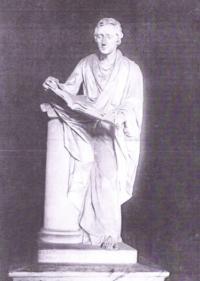Thomas Molyneux
Published in 18th–19th - Century History, Early Modern History (1500–1700), Features, Issue 4 (July/August 2011), Volume 19
Thomas Molyneux (1661–1733), first professor of physic in the new medical school. (St Patrick’s Cathedral, Armagh)
Thomas Molyneux was the first professor of physic in the new medical school. He was a Trinity graduate, having studied for his BA from 1676 to 1680. Medical studies followed between 1683 and 1687, when he spent time in England, Leiden and Paris. While he was at Leiden he compiled a catalogue of two collections for the Royal Society and contributed to their Philosophical Transactions. He was elected a fellow of the Royal Society in 1686. In 1687 he returned to Dublin, where he was awarded an MD by Trinity College. He had planned to practise medicine in Dublin, but because of civil unrest he moved to Chester until James II was defeated at the Battle of the Boyne. He then returned to Dublin and started to practise medicine there. Molyneux was active in the Dublin Philosophical Society and his contributions to it included the first scientific studies of the Irish elk and the Giant’s Causeway. He was one of the first seven doctors elected as fellows of the newly chartered King and Queen’s College of Physicians in Ireland and became its censor, registrar and treasurer, as well as president on four occasions between 1702 and 1720. He was created a baronet in 1730 and remained regius professor of physic at Trinity College until his death in 1733 at the age of 72.
















